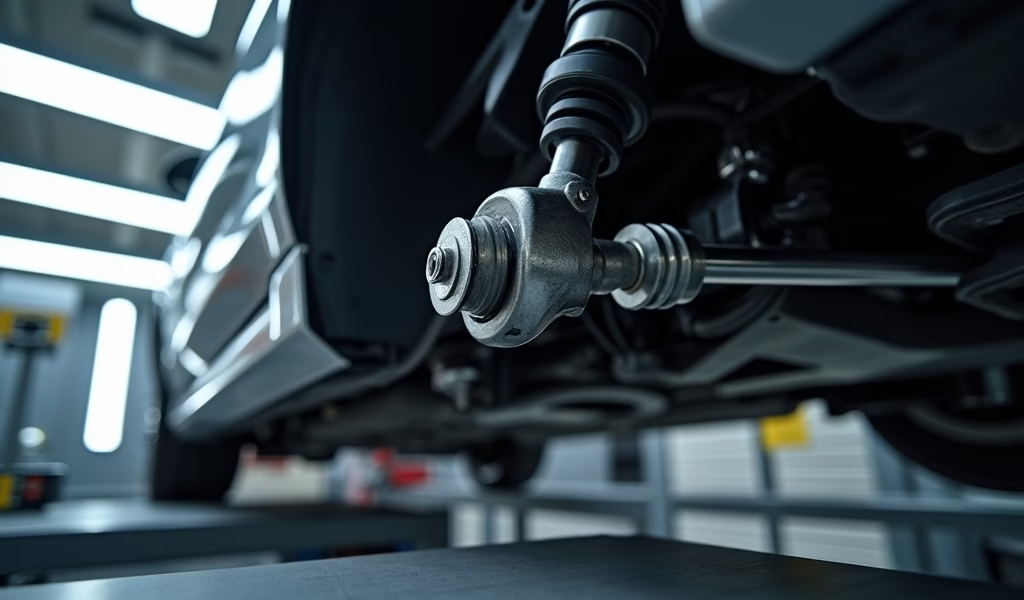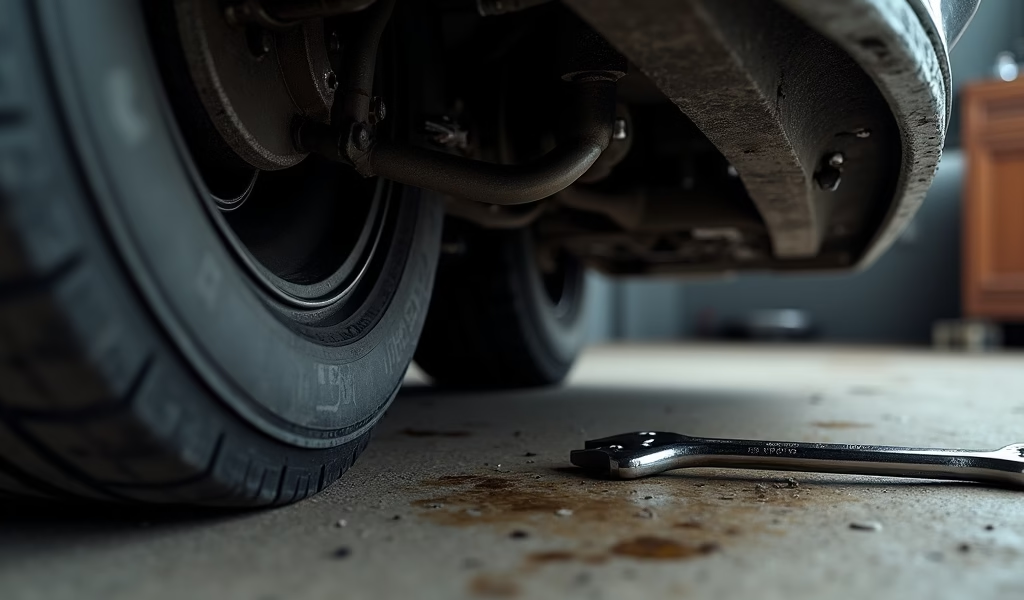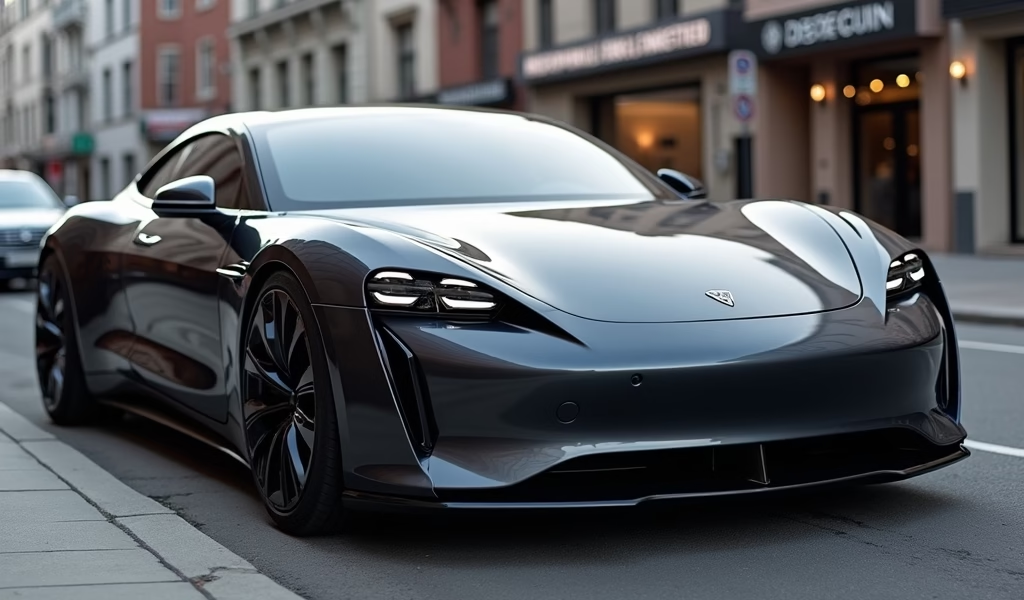Overview
This article explains how kingpin inclination angle (KIA) significantly impacts vehicle handling, stability, and steering response, offering seven expert tips for optimizing this critical suspension component. It covers the relationship between KIA and scrub radius, ideal measurements for different driving purposes, troubleshooting common issues, and considerations when modifying suspension components.
Table of Contents
- Understanding Kingpin Inclination Angle
- Tip #1: Mastering the KIA and Scrub Radius Relationship
- Tip #2: Optimizing KIA for Performance Driving
- Tip #3: Ideal Kingpin Inclination for Daily Drivers
- Tip #4: Professional Measurement Techniques
- Tip #5: KIA Considerations When Modifying Suspension
- Tip #6: Troubleshooting Common KIA Problems
- Tip #7: Professional Setup vs. DIY Adjustment
- Conclusion
- Frequently Asked Questions
Understanding Kingpin Inclination Angle
You’ve probably felt it before – that confident, planted feeling when driving a well-engineered vehicle. Much of that stability comes from an often-overlooked suspension component: the kingpin inclination angle (KIA). As a mechanic with 20 years under my belt, I can tell you this humble measurement makes a world of difference in how your vehicle handles.
Kingpin inclination angle is the inward tilt of your steering axis when viewed from the front of the vehicle. This angle, measured in degrees from vertical, works alongside caster angle measurements to determine your vehicle’s handling characteristics. Think of KIA as the foundation of your steering system – get it right, and everything else falls into place.
The ideal KIA varies by vehicle type. Sports cars typically run steeper angles (12-15 degrees) for enhanced feedback, while comfort-oriented vehicles use moderate angles (8-12 degrees) to prioritize smoother steering action. Commercial trucks have their own standards based on load-carrying requirements and durability concerns.
When properly set, KIA creates a self-centering effect that helps your steering wheel return to center after completing turns. This natural return-to-center feedback is what gives drivers confidence at highway speeds and through corners. It’s the difference between a car that feels connected to the road and one that feels vague and uncertain.

Tip #1: Mastering the KIA and Scrub Radius Relationship
The kingpin inclination angle and scrub radius work as partners in your vehicle’s suspension geometry. When they’re in harmony, your car handles predictably. When they’re not, problems emerge.
Scrub radius is the distance between where your steering axis meets the ground and the center of your tire’s contact patch. This measurement directly affects steering feedback and stability.
For front-wheel-drive vehicles, a slight negative scrub radius (where the steering axis meets the ground outside the tire contact patch) improves stability during braking, especially on surfaces with varying traction. You’ll typically want between -5mm and 0mm for optimal handling.
Rear-wheel-drive performance vehicles often benefit from a small positive scrub radius (0mm to +5mm), which provides enhanced steering feel at the expense of some straight-line stability. This trade-off is acceptable in performance applications where driver feedback is prioritized.
According to research from the Society of Automotive Engineers, the relationship between KIA and scrub radius significantly impacts steering effort and feedback. Their studies show that adjusting these measurements together rather than independently produces the most balanced handling characteristics.
Tip #2: Optimizing KIA for Performance Driving
When you’re pushing your vehicle to its limits on track days, kingpin inclination becomes a critical tuning parameter. Performance-oriented setups typically benefit from increased KIA – usually between 12-15 degrees – to enhance high-speed stability.
This steeper angle creates a stronger self-centering effect that provides valuable feedback during aggressive cornering. You’ll notice the steering wheel wants to return to center more assertively, giving you clear information about available grip and chassis balance.
Be aware of the trade-offs, though. Increasing KIA causes the front end to lift slightly during turns, which affects weight transfer. This can be beneficial for reducing dive during braking but may reduce front-end grip in certain situations.
For track enthusiasts, I recommend starting with small half-degree adjustments followed by testing sessions. Pay attention to:
- Turn-in response (how quickly the car begins to rotate when you turn the wheel)
- Mid-corner stability (how planted the car feels at the apex)
- Corner exit behavior (how predictably the car transitions back to straight-line driving)
Many professional race teams adjust kingpin inclination based on specific track characteristics. Faster tracks with flowing corners often benefit from more KIA, while technical tracks with tight turns may require less to reduce steering effort.
Tip #3: Ideal Kingpin Inclination for Daily Drivers
For those of us who spend more time commuting than competing, kingpin inclination should prioritize different characteristics. Your daily driver needs to be easy to maneuver at parking lot speeds yet stable on the highway.
A moderate KIA (typically between 8-12 degrees) hits this sweet spot perfectly. This range reduces low-speed steering effort while maintaining adequate feedback and stability at highway speeds. It’s what I call the “Goldilocks zone” – not too heavy, not too light, but just right.
Modern vehicles with electric power steering have somewhat reduced the importance of KIA for steering effort, but its impact on stability remains significant. If your vehicle tends to wander on the highway or feels twitchy during lane changes, the kingpin inclination angle may need adjustment.
One often overlooked benefit of proper KIA for daily drivers is reduced driver fatigue. When your car tracks straight with minimal corrections, long drives become much less taxing. Your shoulders and arms will thank you after that four-hour road trip.
Most manufacturers optimize their suspension geometry for 70-30 highway-city driving. If your driving habits differ significantly from this ratio, consider adjusting your KIA to better suit your needs through suspension geometry modifications.
Tip #4: Professional Measurement Techniques
Accurately measuring kingpin inclination requires precision and the right tools. This isn’t a job where “close enough” will do – even half a degree can make a noticeable difference in handling.
Professional alignment systems use computerized sensors that measure KIA with decimal precision. For DIY enthusiasts, digital protractors designed specifically for automotive use can provide reasonable accuracy, but they require careful setup and multiple measurements to ensure consistency.
The measurement process includes several critical steps:
- Position the vehicle on a completely level surface
- Set tire pressures precisely to manufacturer specifications
- Place the measuring device parallel to the steering axis
- Take readings with wheels straight ahead and at various steering angles
- Verify consistency with multiple measurements
A common measurement mistake is failing to account for related geometry changes. Altering KIA affects camber and toe settings as well, requiring a comprehensive alignment afterward. These settings are interconnected – change one, and you’ll need to adjust the others.
For accuracy within a half-degree (which is what you want for performance applications), I strongly recommend professional equipment. The Hunter HawkEye Elite alignment system used in many professional shops provides the precision needed for proper suspension tuning.

Tip #5: KIA Considerations When Modifying Suspension
The aftermarket suspension world loves lowering vehicles, but this approach can wreak havoc on your kingpin inclination angle. Lowering springs, coilovers, and other modifications significantly alter KIA, often unintentionally.
When you lower a vehicle, the geometric relationships throughout the suspension change. In most cases, lowering increases the KIA, leading to heavier steering, unusual tire wear patterns, and potentially reduced suspension travel. It’s the classic case of solving one problem while creating three more.
To maintain proper geometry after lowering, consider these essential adjustments:
- Camber plates or bolts to restore proper wheel alignment
- Roll center correction kits to address changed suspension geometry
- Adjustable control arms to fine-tune suspension pickup points
- Bump steer correction kits to maintain proper steering geometry
Remember that factory engineers spent thousands of hours optimizing these relationships. Modifying one aspect requires careful consideration of the entire system. I’ve seen countless customers chase handling problems after lowering their vehicles, only to discover their KIA was completely out of spec.
If you’re planning significant suspension modifications, I recommend consulting with a specialist who understands suspension geometry. The small additional cost will save you from expensive trial-and-error troubleshooting later.
Tip #6: Troubleshooting Common KIA Problems
Your vehicle speaks to you through its handling characteristics. When kingpin inclination issues arise, several symptoms typically appear – you just need to know how to interpret them.
Excessive or uneven tire wear along the inside or outside edges often indicates improper KIA. This wear pattern develops because the tires aren’t contacting the road at the optimal angle throughout their range of motion.
A steering wheel that doesn’t return to center naturally after completing a turn suggests insufficient kingpin inclination. The self-centering effect isn’t strong enough to overcome friction in the steering system.
Wandering on straight roads, particularly during braking, can signal that the relationship between KIA and scrub radius needs attention. This behavior is especially noticeable on crowned roads, where the vehicle pulls toward the low side.
Diagnosing these issues starts with inspecting steering and suspension components. Worn tie rod ends, ball joints, or control arm bushings can all affect the effective KIA. Check for loose or damaged parts before adjusting alignment settings.
When troubleshooting, remember that KIA works in concert with other alignment parameters. Sometimes, adjusting caster or camber can mitigate KIA-related issues when direct KIA adjustment isn’t possible due to vehicle design limitations.
Tip #7: Professional Setup vs. DIY Adjustment
The age-old question: Should you tackle KIA adjustments yourself or seek professional help? The answer depends on your technical skills, available tools, and specific vehicle design.
DIY adjustments are feasible on older vehicles with more straightforward suspension designs and accessible adjustment points. If you’re comfortable with basic alignment concepts and have proper measuring equipment, minor KIA-related tweaks may be within reach.
However, modern vehicles often require specialized equipment for accurate measurement and adjustment. Professional alignment services typically cost between $100-$200 – a small investment considering the potential costs of premature tire wear or unpredictable handling from improper settings.
Here’s when to definitely choose professional service:
- After any suspension modification (lowering, lift kits, etc.)
- When experiencing unusual handling characteristics
- If you notice abnormal tire wear patterns
- For performance-oriented setups requiring precise measurements
As someone who’s seen both sides, I recommend professional alignment services for KIA adjustments on most vehicles. The investment yields returns in tire longevity, handling predictability, and overall driving satisfaction.
If you do attempt DIY adjustments, document your starting positions carefully before making changes. This allows you to return to baseline if adjustments don’t yield the desired results.
Conclusion
Kingpin inclination angle may not be the most discussed aspect of vehicle dynamics, but its influence on your driving experience is undeniable. From highway stability to cornering confidence, KIA plays a pivotal role in defining how your vehicle communicates with the road.
These seven expert tips provide a solid foundation for understanding and optimizing this critical suspension component. Whether you’re addressing handling issues, modifying your suspension, or simply wanting to understand your vehicle better, attention to kingpin inclination will reward you with improved performance and driving enjoyment.
Remember that suspension geometry is a system of interrelated components. Changing one aspect affects others, so approach modifications with a holistic view. When in doubt, consult with professionals who have the expertise and equipment to ensure proper setup.
The next time you experience that confident, planted feeling in a well-handling vehicle, you’ll know that kingpin inclination angle – the unsung hero of suspension geometry – is quietly doing its job. And that’s exactly how it should be.
Frequently Asked Questions
What is the ideal kingpin inclination angle for most passenger cars?
Most passenger cars operate best with kingpin inclination angles between 8-12 degrees. This range provides a good balance between steering effort and stability for everyday driving conditions.
How does kingpin inclination affect tire wear?
Improper kingpin inclination can cause uneven tire wear, particularly on the inner or outer edges. This happens because the tire doesn’t maintain optimal contact with the road throughout its range of motion.
Can I adjust the kingpin inclination angle on my modern vehicle?
Most modern vehicles don’t allow direct adjustment of the kingpin inclination angle without specialized components. However, aftermarket parts like adjustable control arms and camber plates can indirectly modify KIA.
How often should kingpin inclination be checked?
Kingpin inclination should be checked during routine alignments or whenever suspension components are replaced. For most drivers, this means an inspection once a year or every 12,000-15,000 miles.
What’s the difference between kingpin inclination and caster angle?
Kingpin inclination is the inward tilt of the steering axis when viewed from the front, while caster is the forward or backward tilt when viewed from the side. Both affect steering feel and stability but in different ways.


Pingback: Ackermann Steering Geometry: Top 5 Fixes - knowsyourcar.com